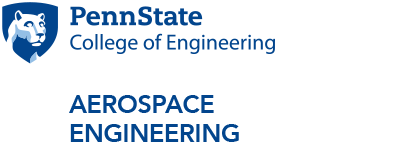
Air-Breathing Propulsion and Turbomachinery Aero-Heat Transfer
Modern air-breathing propulsion systems benefit from novel developments in the fields of aerodynamics and heat transfer. All modes of heat transfer, analytical, computational and experimental fluid dynamics; steady and unsteady turbine and compressor aerodynamics; turbine cooling methods, novel aero-thermal component design innovations and non-intrusive research tool developments are the key supporters of this research area.
The turbomachinery areo-heat transfer laboratory at Penn State operates one of the most unique large-scale turbine research rigs in the United States. A wind tunnel for convective heat transfer applications, a linear cascade facility with an exit Mach number of 0.8, various ducted fan research set-ups, calibration jets, conventional aerodynamic probes, non-intrusive flow diagnostics systems and many data collection and processing systems are available in our laboratory.
The research studies benefit from an already operational infrared thermography system and liquid crystal-based convective heat transfer mapping system. Our recent efforts in the high-performance computing for turbomachinery aero-thermal investigations are performed in dedicated parallel computing environments.
Key Faculty:
Recent Research:
- Tip leakage flow mitigation in axial flow turbomachinery
- Turbine 3D tip carving/shape design
- Turbine disk-cavity flows and rim-seal flow interactions near turbine endwalls
- HP turbine aerodynamic testing
- Non-axisymmetric turbine endwall contouring
- Ducted fan aerodynamics for VTOL UAV systems
- Sand particle trajectory determination near helicopter rotor tip sections
Past Research:
- Short duration and continuous heat transfer testing in hot/ warm cascades, rotating disks, channels and turbines
- Implementation of liquid crystal thermography in convective heat transfer research
- Heat transfer augmentation by oscillating jets, elliptical pin-fins and vortex tubes
- Solid-state diode-lasers in Doppler velocimetry, pressure sensitive paints and planar/3D particle Image velocimetry in turbomachinery flows
Research Areas
- Aeroacoustics
- Air-breathing Propulsion
- Astrodynamics
- Autonomous Flight and UAVs
- Computational and Experimental Fluid Dynamics
- Flight Science
- Multifunctional Structures and Nanomaterials
- Rotorcraft Engineering
- Space Propulsion and Plasmas
- Structural Dynamics and Adaptive Structures
- Vehicle Dynamics and Control
- Vehicle Systems Engineering
- Wind Energy



